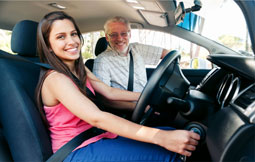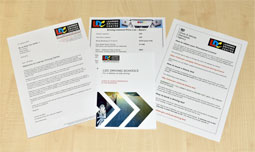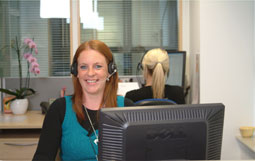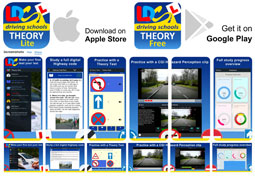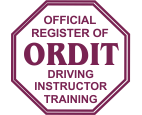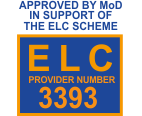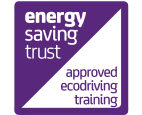12 Proper use of the main controls of the car
 Throughout the test the examiner will be noting the way you use the main controls of the car. Certain control faults are not recorded under this report heading because they relate to a specific manoeuvre such as the turn in the road.
Throughout the test the examiner will be noting the way you use the main controls of the car. Certain control faults are not recorded under this report heading because they relate to a specific manoeuvre such as the turn in the road.
What the examiner is looking for
The examiner is checking that you use the main controls:
Driving faults recorded
12 Control
- Accelerator/Clutch
- Gears
- Foot brake
- Hand/parking brake
- Steering
Accelerator and clutch
What the examiner is looking for
The examiner is looking for you to:
- Control and balance the accelerator and clutch together to pull away smoothly or to maintain a slow speed in either forward or reverse gear, or to change gear
- Use the accelerator smoothly when accelerating and avoid surging
- Depress the clutch just before stopping the car.
When using an automatic car you must use the accelerator smoothly
- To avoid surging either forwards or backwards
- To control gear changes up the gearbox.
Driving faults recorded
12 Control
Accelerator:
- Excessive pressure causing wheel spin.
- Erratic pressure causing surging.
- Not removing pressure while changing gear.
- Applying pressure too soon after changing gear.
Clutch:
- Jerky control.
- Lack of control.
- Releases too quickly.
- Riding the pedal.
- Not pressing fully to the floor.
- Not used when stopping.
Gears
What the examiner is looking for
The examiner is looking for you to:
- Change gear in good time for any hazard
- Select the correct gear for the road conditions and the speed you are travelling at.
If driving an automatic and travelling down a steep hill the examiner will expect you to select a low gear.
Driving faults recorded
12 Control
Gears:
- Incorrect gear selection.
- Coasting in neutral.
- Reluctant to select higher gears.
- Labours the engine.
- Does not match gear with road speed.
- Excessive speed in gear.
- Unnecessary gear changes.
- Used to reduce speed instead of brakes.
- Selected too soon for hazards.
- Selected too late for hazards.
Foot brake
What the examiner is looking for
The examiner is looking for you to:
- Brake smoothly and in good time
- Brake lightly in most situations
- Ease off the brake to a smooth stop or when you have reached the required speed.
When driving an automatic car the examiner is checking that you put your right foot on the foot brake before selecting Drive.
Driving faults recorded
12 Control
Foot brake:
- Not used when required.
- Late use on approach to hazards.
- Harsh use by pressing too fiercely.
Hand/parking brake
What the examiner is looking for
The examiner is looking for you to:
- Apply and release the handbrake properly
- Apply the handbrake when securing the car after stopping
- Apply the handbrake on a gradient to prevent rolling forward/backwards after stopping.
When driving an automatic the parking brake should only be applied after stopping and selecting Park.
Driving faults recorded
12 Control
Handbrake/parking brake:
- Not applying when necessary
- Not releasing properly.
- Moving away with it partially on.
- Not applying properly.
- Applying on the move.
- Rolling backwards or forward after stopping.
Steering
What the examiner is looking for
The examiner is looking for you to
- Correctly hold the steering wheel at either ten-to-two or quarter-to-three whichever is the most comfortable for you
- Have smooth steering movements, using the pull push method
- Turn the steering wheel sufficiently and at the correct time when negotiating bends, corners and junctions.
Driving faults recorded
12 Control
Steering:
- Incorrect hand position on the wheel.
- Losing control by crossing hands.
- Allowing wheel to spin back after turning.
- Retaining hand on the gear lever for too long.
- Removes both hands from steering wheel.
- Overshooting right turns.
- Over steers on corners.
- Under steers on corners.
- Steering with the right arm on the window ledge.
Striking the kerb when stopping.
Previous Next
